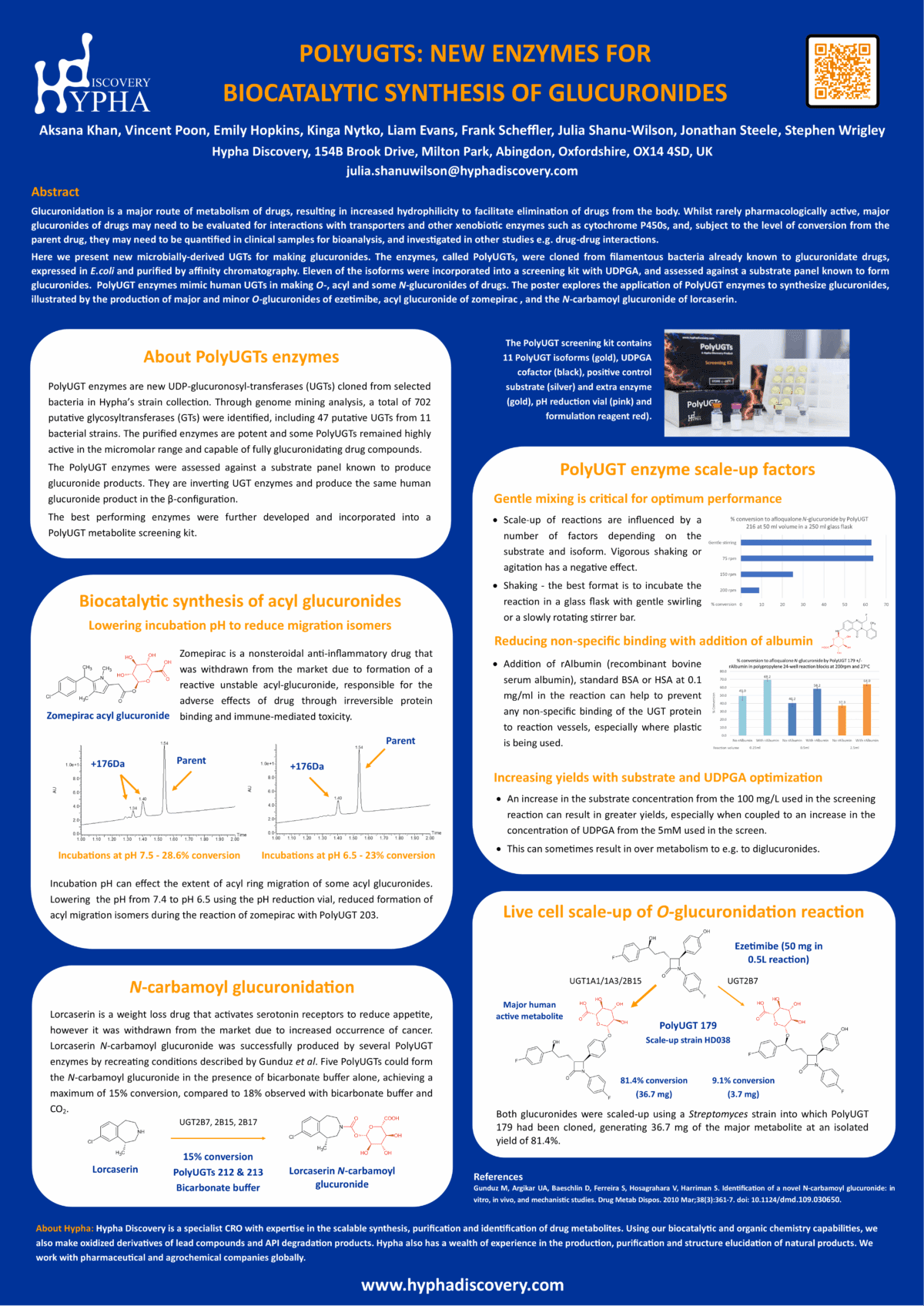
Abstract
Glucuronidation is a major route of metabolism of drugs, resulting in increased hydrophilicity to facilitate elimination of drugs from the body. Whilst rarely pharmacologically active, major glucuronides of drugs may need to be evaluated for interactions with transporters and other xenobiotic enzymes such as cytochrome P450s, and, subject to the level of conversion from the parent drug, they may need to be quantified in clinical samples for bioanalysis, and investigated in other studies e.g. drug-drug interactions.
Here we present new microbially-derived UGTs for making glucuronides. The enzymes, called PolyUGTs®, were cloned from filamentous bacteria already known to glucuronidate drugs, expressed in E.coli and purified by affinity chromatography. Through genome mining analysis, a total of 702 putative glycosyltransferases (GTs) were identified, including 47 putative UGTs from 11 bacterial strains. The purified enzymes were found to be highly potent and some PolyUGTs remained highly active in the micromolar range against selected substrates. Eleven of the isoforms were incorporated into a screening kit with UDPGA, and assessed against a substrate panel known to form glucuronides. PolyUGT enzymes mimic human UGTs in making O-, acyl and some N-glucuronides of drugs. This includes glucuronidation of alkyl and phenolic hydroxyls for O-glucuronides, carboxylic acids for acyl-glucuronides, as well as aromatic nitrogen-containing systems for N-glucuronidation. Glucuronidation of some non-aromatic alkyl N-moieties is also observed.
The poster explores the application of PolyUGT enzymes to produce scalable quantities of glucuronides, illustrated by the production of major and minor O-glucuronides of ezetimibe by PolyUGT 179. The glucuronide was scaled-up using a streptomyces strain into which PolyUGT 179 had been cloned, generating 36.7 mg of the major human active metabolite at an isolated yield of 81.4%. For acyl glucuronides, the effect of incubation pH on the extent of acyl ring migration of more labile metabolites is presented where a reduction from pH 7.4 to pH 6.5 reduced the formation of acyl migration isomers of zomepirac by PolyUGT 203 at a conversion of 23%. The final example looks at how the formation of lorcaserin N‑carbamoyl glucuronide was produced by recreating conditions described by Gunduz et al.[1] Five PolyUGTs could form the N-carbamoyl glucuronide in the presence of bicarbonate buffer alone, achieving 15% conversion with PolyUGTs 212 & 213, compared to a maximum of 18% observed with bicarbonate buffer and CO2.
Poster presented at ISSX2025 by Julia Shanu-Wilson